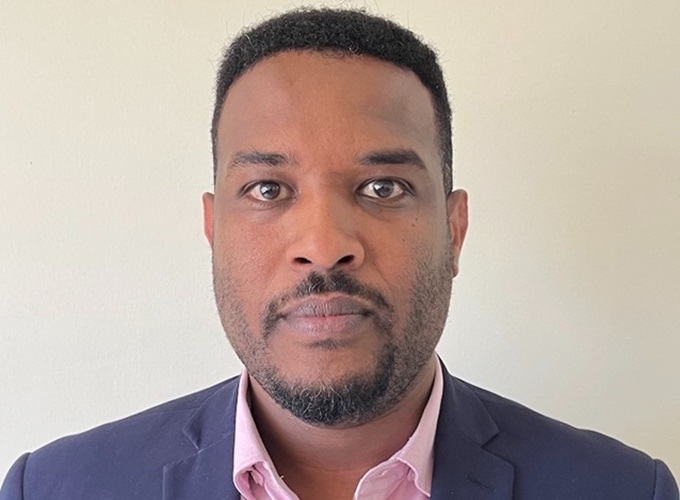
Climate change has become the number one, and looming global threat against humanity. It is causing disasters like drought, flood and heat waves, among others that are claiming the lives of thousands. Developing countries especially those in Africa are also facing the brunt of the crisis due to their capacity limitation.
Especially East Africa has become one of the most hard-hit parts of the world due to climate change. For decades it has been suffering from protracted seasons of drought which in turn led to conflict, migration and slow down of development and poverty. Yet in recent years or months, it has been facing the other side of the consequences of climate change, which is longer wet seasons including unprecedented levels of flooding. Is such a situation to remain a permanent change of weather conditions or a temporary disaster? What can governments do to cope with the impacts?
The Ethiopian Herald has recently held a brief interview with Dr Hussein on the current climate crisis in the region and measures that the governments and concerned institutions should take to curb the possible crisis.
Born in 1986 in Ethiopia, Dr. Hussen Seid Endris graduated from Arbaminch University with a Bachelor of Science (BSc) degree in Meteorology. He then Postgraduate (Pre-PhD) in Earth System Physics, at Abdus Salam International Centre for Theoretical Physics (ICTP), Trieste, Italy. He held his PhD in Atmospheric Science from, the University of Cape Town, South Africa.
Currently, he is working as a Climate Scientist at the IGAD Climate Prediction and Applications Centre (ICPAC). Dr Hussein is a senior climate modelling expert at the IGAD Climate Prediction and Applications Centre (ICPAC). He has solid experience in climate forecasting, regional climate modelling, statistical downscaling, model evaluation, uncertainty analysis and climate change scenario development. Dr Endris has actively participated in and made significant contributions to various climate prediction and climate change-related projects, including but not limited to: (1) Intra-ACP Climate Services and Related Applications (ClimSA) (2) Accelerating the Impact of CGIAR Climate Research for Africa (AICCRA) (3) GCRF African Science for Weather Information and Forecasting Techniques (GCRF African-SWIFT) (4) USAID funded Planning for Resilience in East Africa through Policy, Adaptation, Research, and Economic Development (PREPARED), (5) Climate Change Vulnerability Assessment (CCVA) of Kenya Water Towers (Mau Complex, Cherengani and Elgon Water Towers) (6) Downscaling Climate Data and Runoff Projections for Kenya Integrated Water, Sanitation and Hygiene Project (KIWASH) Project Counties (Implemented jointly with Regional Centre for Mapping of Resources for Development (RCMRD)).
Dr. Hussein has authored and co-authored several scientific journal articles, demonstrating his commitment to advancing knowledge in the field. He is one of the contributing authors in the Inter-governmental Panel on Climate Change (IPCC) fifth and sixth assessment reports (AR5 and AR6) on the climate section of the Africa chapter. Furthermore, he has gained leadership and management competencies through his participation in the One Planet Fellowship Programme. Enjoy reading!
Could you tell us about the overall, current trend of climate in the East Africa region?
Eastern Africa is one of the most vulnerable regions to climate variability and change. The region has experienced several climate-related challenges. And as you have also noticed in recent years the region has witnessed a very high frequency of extreme events including the prolonged droughts that we have seen from 2020 up to 2022 on one side and the intense flooding on the other side that we are currently experiencing. So these events have caused widespread destruction and displacement of communities and also the loss of lives. And as we also know like the other parts, our region is also experiencing an increase in temperature.
For the last 2 decades starting from back there is 2009 to 2011 the region has experienced one of the worst droughts, which led to famine. Then in 2015 again there was a very strong El Nino in then which led to droughts in the northern part of the region during the June to September rainfall season, which affected parts of Ethiopia, South Sudan and Sudan. Then in 2018/19, several tropical Cyclones occurred over the tropical Indian Ocean which again led to intense rainfall in our region and the region has experienced a very severe, rainfall. Then also in 2019, it was one of the strong Indian Ocean dipoles. Then again that also led to heavy rainfall, as you also might remember, during the start of 2020 and the region also experienced one of the worst, desert Locust Invasions because of those heavy rainfalls that happened in 2018/19. Then again from 2020 up to 2022,
towards the end of the season towards the end of this year. So basically we are just moving from one extreme to The Other Extreme. So it’s not a shift from a prolonged drought to a wet season.
How does ICPAC work in managing climate-related issues in the region?
ICPAC as a regional climate Prediction Center predict the weather and climate conditions and we share this information with the various stakeholders, as well as the government agencies and also the International Organization. We are now expecting these trials than usual conditions, so governments and as well as humanitarian organizations need to prepare for that one. We need to move from this kind of reactive approach to a proactive approach. So the government should prepare, to mitigate or reduce this impact throughout rather than responding later on after it happened.
What does it mean there is a large variability in rainfall in East Africa?
What it means is that the rainfall patterns in the region show a significant, variation, over time and space. So when you talk about variability can be over time it can be also over a space. So just looking at the variation over time. So we have like the interact variability. This is the variability like a year to it. So that is what we are currently seeing. And also there is variability even within the season. Within a single season you can have an even distribution of rainfall you can have periods of very intense rainfall and you can have also periods of dry weather. So there’s also that is in the season then again, you can also have this decadal kind of variability that is like changes over 10 to 15 years.
Then there’s the spatial variability. So rainfall also patterns can vary from one place to the other. Just to give you an example last year it was wet in parts of Eastern Africa, but it was also dry in some parts of the region the March to May rainfall season was extremely wet over the equatorial parts of Eastern Africa, but the June to September rainfall season was dry over the northern part of the region and which affected also several thousands of people. Then again October to December, it was with so there’s also that spatial variability and temperature.
Are there unique or special factors that contribute to climate change in East Africa?
Geographically, East Africa has a unique picture. It is just one of the regions with this is a complex kind of job. Geographical features have very high land areas. It has very low land areas. It has also coastal regions and plateaus. So this led to a variation of rainfall complications in the other locations but looking at how the effects of these extremes, one of the reasons that we are seeing this is because of the limited capacity. Many countries in the region have limited resources and also
they have limited institutional capacity and infrastructure. The rainfall is heavy it is obvious but looking at for example the number of people who died in Kenya because the roads were not well, then the sewage system and many parts of also East African countries were not that very good. So this kind of thing increases the impact of these extremes.
People, especially agrarian communities have traditional ways of predicting the length or duration of seasons. Do you think this climate change will affect their work? How is Climate change going to affect agriculture and prediction of seasons?
Climate change is likely to affect the traditional methods of predicting climate conditions; They often rely on natural indicators like it can be the behaviour of plants be the behaviour of animals or it can be a behaviour of weather patterns Now climate change is so those indicators and is going to make these traditional forecasting methods less reliable. So the best way is to integrate the traditional, forecasting methods with the modern scientific methods.
Given all these changing trends in climatic conditions in East Africa, and the decades-old vulnerability of the region, do you think governments and concerned institutions have to take equivalent reactions, like policy changes, development works … etc?
The governments and the concerned institutions must take proactive action to address the impact of climate change. So as I mentioned earlier we need to move like from this reactive approach Which is responding and reacting quickly to the situation to more of this proactive approach which is preparing and planning for future circumstances.
It’s the reality we are now living with it. And is going to also increase these climate Extremes in the future in our region. So we should invest in climate-resilient infrastructures. This could be like flood protection measures it could be resilient agricultural practices, and also the irrigation systems or strengthening dams. This kind of I think Investments are very key to reducing the impact of climate extremes. Also, we need to implement adaptation strategies tailored to local contexts if there are areas affected by droughts then we need to promote these drought-resistant crops. And also implement sustainable land management practices. So also even diversifying the livelihoods of the people to reduce dependence on the climate sector. So there are several ways and also one of the adaptation tools is the early warning system or government really should invest in the development of a robust early warning system that provides timely and accurate information to the vulnerable population. If you have that information, we can prepare or we can reduce the impact of these extremes.
As an expert in climate science, what would like to advise governments in the region?
These climate extremes are increasing from time to time and we are likely also to experience more extremes in the future under a changing climate. So we need to prepare for that one. We need to use the available information, to prepare and also, reduce the impact of this climate extreme that we are currently seeing. We need to invest as I mentioned in the climate smart infrastructures. So all the things that we are doing currently should be climate Smart in the agriculture sector in the infrastructure or even the other sectors, need to be climate smart. So that is what I’m saying. We need to use the available information. Now the national methodological agencies are issuing forecasts and one information. Also, the Regional Climate Center, ICPAC is producing this information. So the information is there but the action is not really to that level. So for example for this season, we have issued a forecast in February that we are going to experience and enhance the rainfall over our region. So we issued we have shared this information with our stakeholders but the actions that are taken are not really that satisfactory.
How do you make and disseminate your climate predictions with stakeholders?
At ICPAC we prepare a weather outlook forum three times a year. One is in February for the March to May season. Another one is done in May, which will take place next week in Juba and we will be sharing information for June to September season. For the October to December season, we officially communicate that information by August. Now the coming very soon is the June to September season which will be sharing, this forecast for that particular rainfall season for various stakeholders, and we will officially communicate that one.
Do you have a working relationship with the meteorological services of member states?
ICPAC as a regional climate organization, works with national meteorological services. Particularly doing this area of capacity development. All the national Research Services from this great home of Africa region or the Eastern Africa region covering 11 countries have access to our high-performance Computing, system so they can access system. They can run high-resolution level models and can produce information. So even if they don’t have that level of capacity, we still we are still providing those resources to them and they are building also the capacity of them their technical industry infrastructure capacity.
Thank you very much for your time!
You’re most welcome!
BY ZEKARIAS WOLDEMARIAM
The Ethiopian herald May 11/2024





